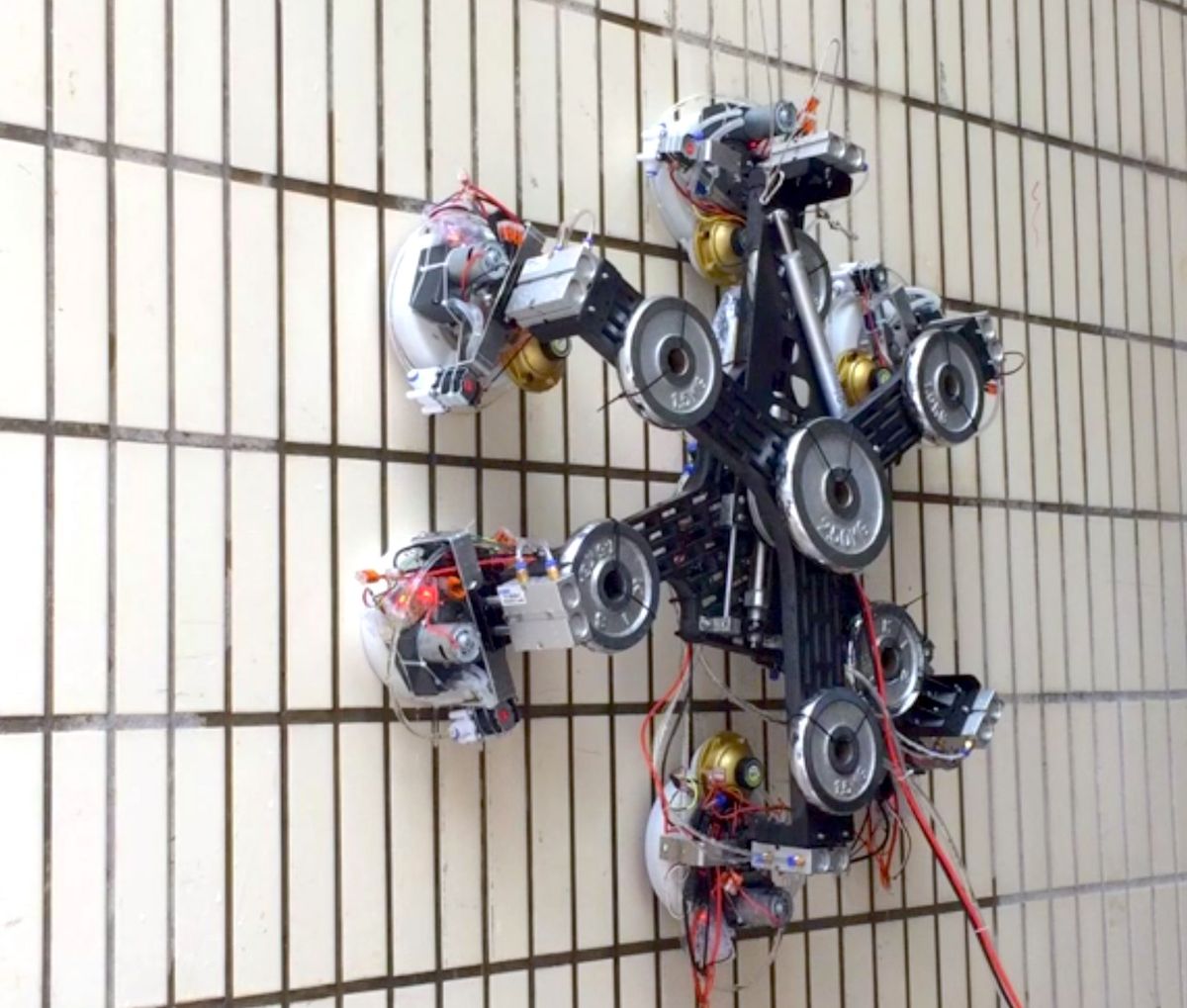Suction is a useful tool in many robotic applications, as long as those applications are grasping objects that are suction-friendly—that is, objects that are impermeable and generally smooth-ish and flat-ish. If you can’t form a seal on a surface, your suction gripper is going to have a bad time, which is why you don’t often see suction systems working outside of an environment that’s at least semi-constrained. Warehouses? Yes. Kitchens? Maybe. The outdoors? Almost certainly not.
In general, getting robotic grippers (and robots themselves) to adhere to smooth surfaces and rough surfaces requires completely different technology. But researchers from Zhejiang University in China have come up with a new kind of suction gripper that can very efficiently handle surfaces like widely-spaced tile and even rough concrete, by augmenting the sealing system with a spinning vortex of water.

The paper is a little bit dense, but from what I can make out, what’s going on is that you’ve got a traditional suction gripper with a vacuum pump, modified with a water injection system and a fan. The fan has nothing to do with creating or maintaining a vacuum—its job is to get the water spinning at up to 90 rotations per second. Centripetal force causes the spinning water to form a ring around the outside of the vacuum chamber, which keeps the water from being sucked out through the vacuum pump while also maintaining a liquid seal between the vacuum chamber and the surface. Because water can get into all of those annoying little nooks and crannies that can mean doom for traditional vacuum grippers, the seal is much better, resulting in far higher performance, especially on surfaces with high roughness.

For example, a single suction unit weighing 0.8 kg was able to generate a suction force of over 245 N on a rough surface using less than 400 W, while a traditional suction unit of the same footprint would need several thousand watts (and weigh dozens of kilograms) to generate a comparable amount of suction, since the rough surface would cause a significant amount of leakage (although not a loss of suction). At very high power, the efficiency does decrease a bit— the “Spider-Man” system weighs 3 kg per unit, with a suction force of 2000 N using 650 W.
And as for the downsides? Er, well, it does kind of leak all over the place, especially when disengaging. The “Spider-Man” version leaks over 2 liters per minute. It’s only water, but still. And since it leaks, it needs to be provided with a constant water supply, which limits its versatility. The researchers are working on ways of significantly reducing water consumption to make the system more independent, but personally, I feel like the splooshyness is part of the appeal.
“Vacuum suction unit based on the zero pressure difference method,” by Kaige Shi and Xin Li from Zhejiang University in China, is published in Physics of Fluids.
Evan Ackerman is a senior editor at IEEE Spectrum. Since 2007, he has written over 6,000 articles on robotics and technology. He has a degree in Martian geology and is excellent at playing bagpipes.



